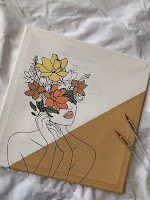The Power of Art: How Creativity Enhances Mental Well-being
The Power of Art: How Creativity Enhances Mental Well-being
Art has been an integral part of human expression for centuries, serving as a powerful tool for communication, introspection, and emotional release. Beyond its aesthetic appeal, art has the remarkable ability to positively impact mental well-being. In this blog post, we will explore the profound connection between art, creativity, and mental health, highlighting the transformative power of artistic endeavours.
Art as a Therapeutic Outlet:
Artistic activities provide an outlet for emotions and thoughts that may otherwise remain unexpressed. Whether it's painting, drawing, sculpting, or even writing, the act of creating allows individuals to channel their feelings into a tangible form. This process can be cathartic, helping to release stress, anxiety, and emotional burdens. Art serves as a means of self-expression, enabling individuals to communicate their innermost thoughts and experiences without needing words.
Stress Reduction and Mindfulness:
Artistic activities have been shown to reduce stress levels by promoting a state of mindfulness. When fully immersed in the creative process, individuals enter a flow state, where they are entirely focused and absorbed in the present moment. This state of flow helps to quiet the mind, reduce racing thoughts, and alleviate stress. Engaging in art allows individuals to disconnect from everyday worries and immerse themselves in a world of colours, shapes, and textures.
Enhancing Self-Confidence and Self-Esteem:
Creating art can boost self-confidence and self-esteem by providing a sense of accomplishment and personal fulfilment. Transforming ideas and visions into reality fosters a sense of mastery and empowers individuals to recognize their creative abilities. The positive feedback received from others can further enhance self-worth and reinforce a sense of validation.
Art as a Means of Communication and Connection:
Art transcends language barriers and serves as a universal medium of communication. For individuals struggling with verbal expression, art becomes a powerful tool for conveying thoughts, emotions, and experiences. It can bridge gaps in communication, enabling individuals to connect with others on a deeper level. Art therapy, in particular, has been widely used to support individuals with mental health challenges, allowing them to explore and communicate their feelings in a safe and supportive environment.
Promoting Emotional Resilience and Coping Skills:
Engaging in art nurtures emotional resilience by providing individuals with a healthy outlet for processing difficult emotions and experiences. Through art, individuals can explore and confront their fears, traumas, and anxieties in a non-threatening manner. The creative process encourages problem-solving skills and flexible thinking, enabling individuals to develop adaptive coping strategies and find new perspectives.
Conclusion:
Art possesses a transformative power that extends beyond the canvas or sculpture. It has the ability to heal, uplift, and strengthen mental well-being. Engaging in artistic activities allows individuals to tap into their creativity, express themselves authentically, and find solace in the process. Whether it's painting, drawing, writing, or any other art form, incorporating art into our lives can profoundly enhance our mental health and overall well-being. So, embrace the power of art and let your creativity flourish for a healthier mind and soul.




Comments
Post a Comment